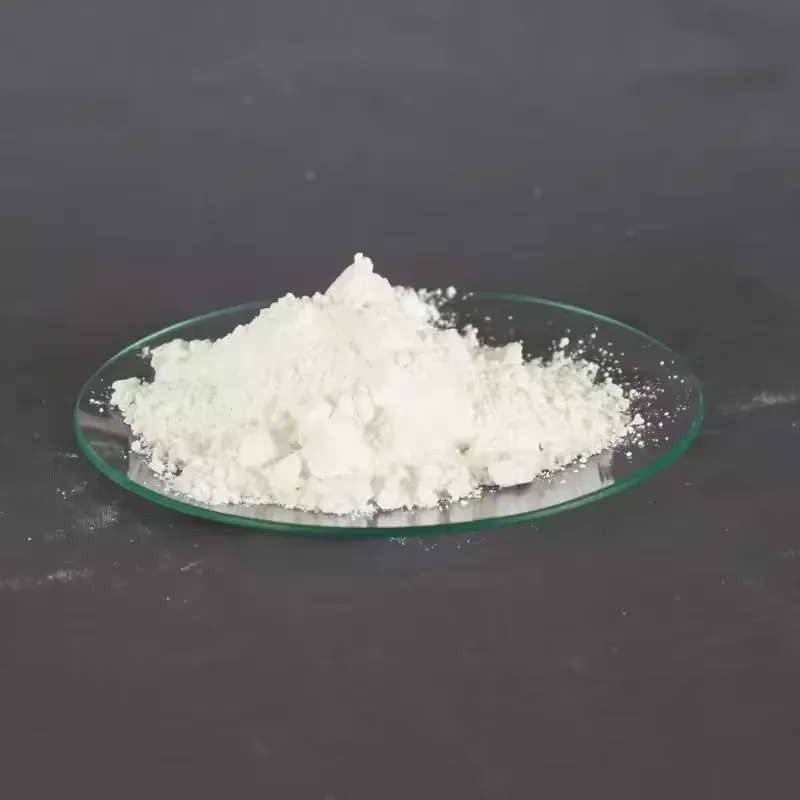
सितम्बर . 12, 2025 09:14 सूची पर वापस जाएं
Titanium Dioxide Applications in Colored Rubber Goods Manufacturing
The rubber manufacturing industry has increasingly adopted titanium dioxide pigment as a critical component in producing high-quality colored rubber goods. As a versatile white pigment, titanium dioxide plays multiple functional roles beyond simple coloration in rubber compounds. The availability of specialized titanium dioxide powder for sale has enabled rubber formulators to develop products with enhanced visual appeal, durability, and performance characteristics.

Fundamental Properties of Titanium Dioxide in Rubber
Optical Characteristics and Color Enhancement
The exceptional light-scattering capability of titanium dioxide pigment makes it indispensable in rubber coloration. When properly dispersed, titanium dioxide powder provides:
Outstanding opacity that masks the natural color of rubber compounds
Bright white base for achieving vibrant secondary colors
Consistent coloration throughout the product thickness
Excellent light reflectance that enhances color perception
The refractive index of titanium dioxide (2.55-2.7 depending on crystal structure) creates optimal light scattering when incorporated into rubber matrices, allowing for thinner colored layers without sacrificing coverage.
Surface Modification and Protection
Modern titanium dioxide coating technologies have been adapted for rubber applications to provide:
UV protection for outdoor rubber products
Surface hardening effects in high-wear applications
Improved chemical resistance in industrial rubber goods
Enhanced cleanability for consumer products
These protective qualities make titanium dioxide particularly valuable in applications where rubber products face environmental stresses while maintaining aesthetic requirements.
Manufacturing Considerations for Titanium Dioxide in Rubber
Dispersion Challenges and Solutions
Achieving optimal dispersion of titanium dioxide powder in rubber compounds presents unique challenges due to:
High viscosity of rubber matrices
Shear sensitivity during processing
Temperature constraints in vulcanization
Interaction with other compounding ingredients
Advanced titanium dioxide pigment formulations address these challenges through:
Surface treatments optimized for rubber compatibility
Controlled particle size distributions
Pre-dispersed masterbatch options
Specialized carrier systems
Compounding Techniques
The incorporation of titanium dioxide paint principles into rubber manufacturing requires adaptation of traditional methods:
Two-roll mill dispersion protocols
Internal mixer optimization
Post-incorporation quality verification
Rheology modification strategies
These techniques ensure homogeneous distribution of titanium dioxide coating particles throughout the rubber matrix while maintaining processing characteristics.
रंजातु डाइऑक्साइड’s Application-Specific Uses in Rubber Goods
Footwear and Fashion Rubber Products
In footwear applications, titanium dioxide pigment provides:
Consistent white bases for colored soles
UV protection for outdoor footwear
Surface hardening for high-wear areas
Stain resistance for light-colored products
The availability of various grades of titanium dioxide powder for sale allows footwear manufacturers to select optimal formulations for different product requirements.
Automotive Rubber Components
Automotive applications leverage titanium dioxide for:
Weatherstrip coloration and UV protection
Tire sidewall whitening compounds
Gasket and seal surface properties
Underhood component identification
These applications often require specialized titanium dioxide coating technologies to withstand harsh automotive environments.
Consumer and Industrial Rubber Goods
The broad category of consumer rubber products benefits from titanium dioxide paint technologies through:
Kitchenware coloration and cleanability
Sporting goods color retention
Medical device surface properties
Industrial component identification
Each application demands specific performance characteristics from the titanium dioxide pigment formulation.
रंजातु डाइऑक्साइड’s Performance Enhancement Mechanisms
UV Protection and Weathering Resistance
The incorporation of titanium dioxide powder in rubber formulations provides:
Absorption of damaging UV radiation
Reduction of surface degradation
Prevention of color fading
Maintenance of mechanical properties
These protective effects are particularly valuable for outdoor rubber products exposed to sunlight and weathering.
Surface Hardness and Wear Resistance
Properly formulated titanium dioxide coating in rubber can:
Increase surface hardness without compromising flexibility
Reduce abrasion in high-wear applications
Maintain appearance through product life
Extend service life of colored components
This makes titanium dioxide valuable for products like industrial rollers and conveyor belts.
रंजातु डाइऑक्साइड: Technical Challenges and Solutions
Color Stability During Processing
The high temperatures encountered in rubber processing can challenge titanium dioxide paint stability through:
Thermal degradation risks
Interaction with curing systems
Volatilization of surface treatments
Changes in particle dispersion
Advanced titanium dioxide pigment formulations address these concerns with:
Thermal-stable surface treatments
Inert coating technologies
Particle size optimization
Compatibilization strategies
Long-Term Performance Maintenance
Ensuring lasting performance of titanium dioxide powder in rubber requires:
Resistance to migration and blooming
Maintenance of dispersion stability
Continuous UV protection
Chemical resistance development
These challenges are met through ongoing innovation in titanium dioxide coating technologies.
रंजातु डाइऑक्साइड: Emerging Trends and Future Developments
Smart and Functional Pigments
The future of titanium dioxide paint in rubber includes:
Photocatalytic self-cleaning surfaces
Temperature-responsive color changes
Enhanced antimicrobial properties
Improved sustainability profiles
Sustainable Manufacturing Approaches
Innovations in titanium dioxide pigment production for rubber focus on:
Reduced energy manufacturing processes
Recycled content incorporation
Bio-based surface treatments
Lower environmental impact formulations
The Essential Role of Titanium Dioxide in Rubber
The versatile applications of titanium dioxide powder in colored rubber goods manufacturing demonstrate its irreplaceable value to the industry. From fundamental coloration to advanced protective functions, titanium dioxide coating technologies continue to evolve to meet the demanding requirements of modern rubber products.
As rubber formulators seek titanium dioxide powder for sale, they must carefully consider the specific needs of their applications to select optimal pigment grades. The ongoing development of specialized titanium dioxide paint technologies for rubber ensures that this critical pigment will remain at the forefront of colored rubber innovation for years to come.
The intersection of titanium dioxide pigment science and rubber technology continues to yield exciting advancements that enhance both product performance and manufacturing efficiency. As market demands evolve, so too will the innovative applications of this remarkable material in the rubber industry.
-
Application of Titanium Dioxide 2195 in Water Purification
समाचारNov.14,2025
-
What are the global market trends of Titanox titanium dioxide in recent years
समाचारNov.14,2025
-
Effect of particle size distribution on the optical properties of R996 TiO2
समाचारNov.14,2025
-
Latest Technological Innovations in Rutile Titanium Dioxide Manufacturing
समाचारNov.14,2025
-
Compatibility of Titanium Dioxide Concrete Pigment with Different Concrete Admixtures
समाचारNov.14,2025
-
Environmental Impact of Titanium Dioxide Pigment Manufacturing and Mitigation Measures
समाचारNov.14,2025
